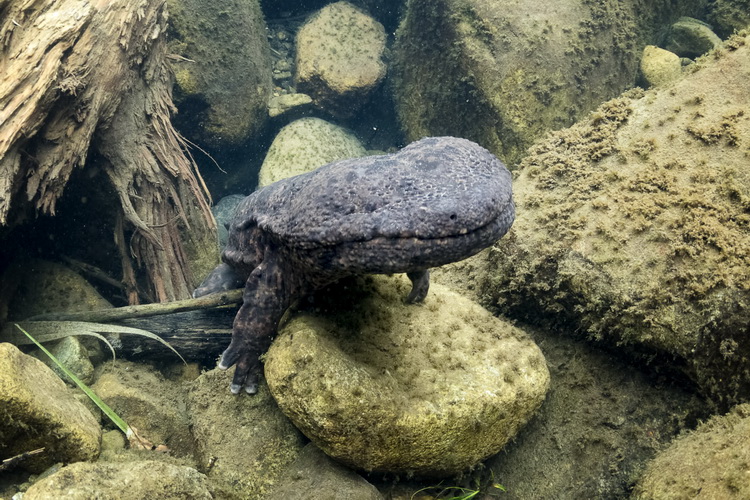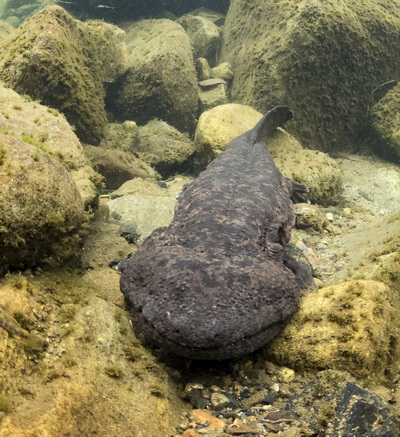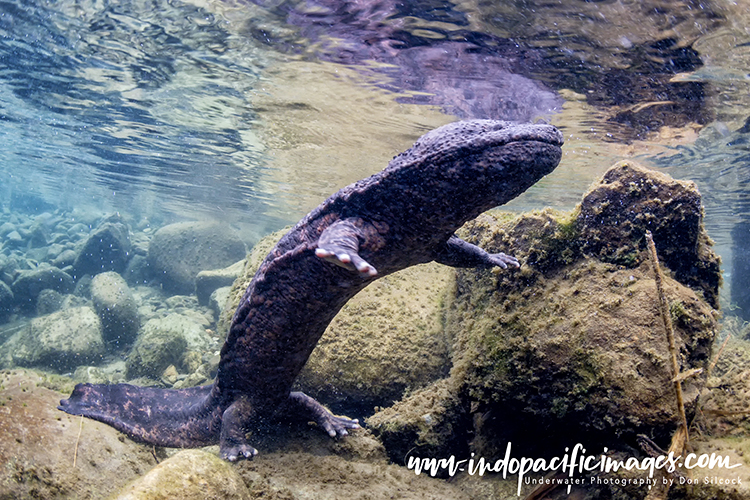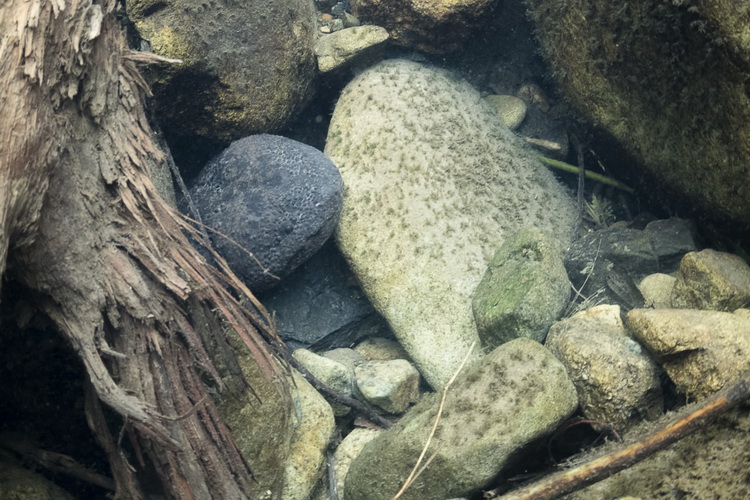The Japanese giant salamander… This rather strange but quite unique creatures live in rivers across western and south-western Japan.
As its common and Latin names (Andrias japonicus) suggests… They are an endemic species of Japan that are both protected under Japanese federal legislation. And formally nominated as a special natural monument because of their cultural and educational significance.

The Japanese giant salamander is indeed quite large, reaching up to 1.5m in length and 25kg in weight. Which together with their large mouth and rather strange features gives them a fairly formidable presence. At least when you first come face to face with them!
The Japanese Giant Salamander – Down Deep…
They have a quite amazing ability to burrow down in to the rocks of the river beds. Which they do head-first and given their overall size really does make you wonder how they turn around down there. Because when they do re-emerge they are face-first…

The Japanese salamander is actually the second largest in the world. With the prize for the biggest going to the closely related Chinese giant salamander. Which can reach 1.8m in length and up to 50kg in weight!

Critically endangered in China, the Chinese salamander was introduced in to Japan for commercial reasons in the early 1970’s. It now poses a threat to the Japanese version as the two species are known to mate, creating a hybrid variant…
The Chinese giant salamander has a reputation locally as being much more aggressive that its Japanese cousin, which is distinctly sloth-like when observed during daylight hours.
That behavior is because the giant salamanders are nocturnal and, because they lose their gills when they are very young, they must interrupt their daytime slumbers to obtain air.
They do that either by rising to the surface, or in rapidly flowing water which is highly oxygenated they can absorb it through their skin.

Face to Face with Them!
Being in the water with these creatures is an interesting experience. Which consists of fairly long periods of inactivity while they slumber down in the river bed rocks. While you wait patiently for something to happen as you float on the surface breathing through your snorkel.
Typically a salamander breathing cycle is about 30 minutes. And looking at rocks while you wait is not exactly exciting… But then you notice a rock that was not there the last time you looked. But it’s not a rock – it just looks like one and it is the salamander starting to re-emerge!

What follows then is typically a slow and cautious crawl up the rocks. Followed by a quick dash to the surface and a scramble back down in to the river bed!
Back To: Complete Japanese Giant Salamander Guide
